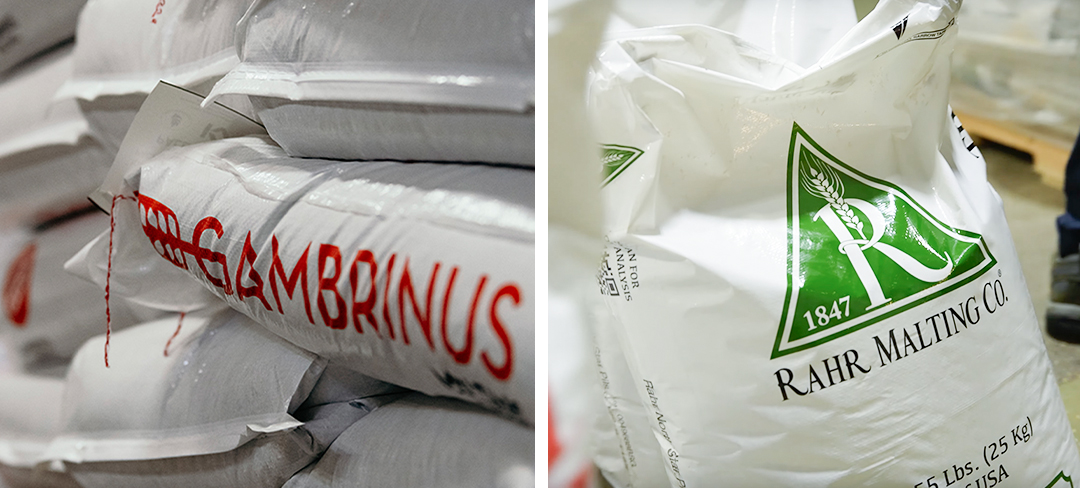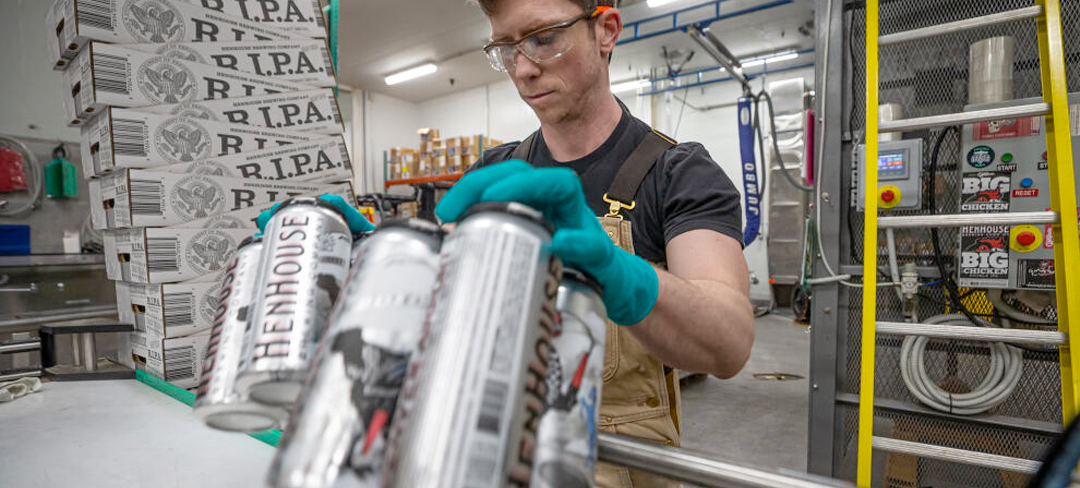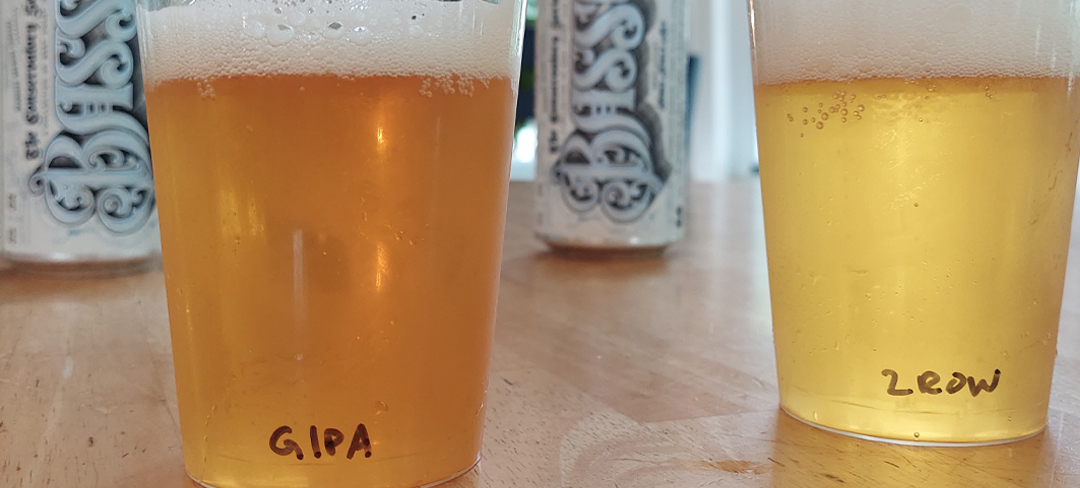HenHouse Brewing on the Importance of Malt in West Coast IPAs

It’s not breaking news to brewers or beer lovers that West Coast IPAs are an extremely popular style right now – and honestly have been for many years. Of course, Hazy IPAs took more than a fair share of the IPA spotlight and hype over the past decade, but West Coast IPAs in their seemingly ever-evolving presentation survived those hazy days and now stand almost as the referendum on New England IPAs. Some joke that “West Coast IPA” is just fancy marketing talk for “a clear IPA” (versus haze bombs), but West Coast IPA are more than just not turbid; they aim for a unique flavor, mouthfeel, and balance through use of hops and, yes, malts (remember those?).
Aiming to provide brewers with a unique malt for brewing these types of beers, Gambrinus Malting® last year released Gambrinus IPA Malt, a base malt tailor made to balance sweetness and body in the presence of piney, juicy, and tropical hop profiles. It strikes that perfect balance between pale Pilsner and golden pale ale malts for a deep golden, very light orange color. To get more input on the malt’s performance, colleagues from RahrBSG and Gambrinus coordinated with HenHouse Brewing Company to produce side-by-side brews for its Conservatory Series of West Coast IPAs.

HenHouse brewed two batches of a beer they named Basso West Coast IPA, one using 100% Rahr Standard 2-Row, the other with 100% IPA Malt. Both beers were hopped the same with CTZ and Simcoe in the kettle and whirlpool, then dry-hopped with Simcoe, Comet, and Citra. The hop bill was designed to provide classic hop notes of pine needles and grapefruit pith along with juicier flavors of tropical fruit. The beers were brewed on the same 30-barrel brewhouse system, and ended up at 6.8% ABV.
While it’s somewhat easy to experience a side-by-side comparison of beers using different dry hops or yeast strains (downstream ingredients), it’s rarer to find an opportunity to taste two versions of the same recipe brewed with different base malts. So we jumped at the chance to taste both beers and talk about them with HenHouse brewmaster Zach Kelly. Kelly’s 14-year brewing career includes five years brewing at Russian River Brewing Company, a brewery largely credited with the development of West Coast IPA, where he admits he became a bit of a technical purist about the style. Kelly shared his thoughts on IPA Malt and more broadly on the important – and often underappreciated – role malt plays in West Coast IPAs.

RahrBSG: Before we dive into your thoughts on Gambrinus IPA Malt and the West Coast IPA style at large, tell us about the Conservatory Series.
Zach Kelly: The Conservatory Series is a music-themed series of six West Coast IPAs with members of our brewing team each brewing a variation. With the amount of people that we have who are musicians on our staff and in our industry, something musically focused resonated with everybody. We’ve all been seeing the tide come with the Return of the West Coast IPA, that’s what everybody really wanted to brew, and it gives our brewers a chance to put their money where their mouths are as far as their love for West Coast IPA.
RahrBSG: You talk about the Return of West Coast IPA. We’re heard more than a few times lately about how the style has morphed in and out of different meanings to different breweries over the past, say, ten years. What is your take on the evolution of West Coast IPA?
Kelly: From the early-to-mid 2010s we had the “bitterness wars.” We had Stone Brewing pumping out 120 IBU beers and that was kind of our West Coast thing. It might have had a little bit of malt sweetness, but ultimately it was really dry with a little bit of acidity. I think now, we’re going back to more romanticism about the hops themselves but a little less romanticism about the malt. For me it’s really interesting to use things like Gambrinus IPA Malt to push the importance of malt forward and into people’s minds.
RahrBSG: So, your effort is two-fold. Bring malt back into the style profile itself, but also into the conversations about West Coast IPA.
Kelly: Right. There was also the age of using slightly more crystal malt in West Coast IPAs. Then acidulated malt was happening for a little while there to get the pH down a bit and enhance the bite of the hops. Just from my experience now, people are using a lot more base 2-Row with maybe something else with it as an accent. I’m trying to make Munich come back again. I’m a big fan of Weyermann® Barke® Munich in a West Coast IPA, maybe 5-10% at the most – a little goes a long way. I’m aiming for a bread-cracker flavor in the background. We need a bit of body in these beers that we’ve been slowly straying from.

RahrBSG: We were lucky enough to have enjoyed two versions of HenHouse’s Basso West Coast IPA release. One brewed with Rahr Standard 2-Row and the other with Gambrinus IPA Malt. Same hopping. No other malts beyond the base malt, so really a great side-by-side comparison. Tell us about your take on the malt differences and your team’s in-house sensory notes on the beers.
Kelly: Between ten tasters, half were able to identify the different samples. Most people thought the 2-Row batch was sweeter. For the IPA Malt batch, some people listed peach rings – like those gummy peach candies – as a description, which is interesting for a hop bill that doesn’t usually produce a lot of stone fruit or sweet fruit. We also got notes of the more expected hop flavors: diesel, tangerine, even lemongrass from that Comet. Some tasters called out a higher bitterness in the IPA Malt version, one person commented on it being a bit grassier, and a few – including myself – noted a very low level of acidity. Several also noted the slightly darker color of the IPA Malt version.
RahrBSG: One of our tasting notes impressions was that the 2-Row version finished with a more singular malt flavor versus the Gambrinus IPA Malt, which had more complexity and layers of malt flavor – even as a single malt beer.
Kelly: Going back to what I was saying before with the direction that West Coast IPA is going and what I’ve been tasting, I think that malt makes up a key component of that. It’s a subtle component in a lot of West Coast IPAs, where someone maybe throws in one bag of wheat and the rest of 2-Row. But, there is a lot of opportunity to think more about what the back end of that beer is. Brewers often call malt ‘the backbone’ of a beer, but I like to call it ‘the back end’ because I usually perceive malt in the back of my palate the most.
There’s an interesting opportunity to think about the way your beer finishes. How does that malt element – the bread, breadcrumb, cracker, crust, Saltine, whatever it is – change the way that you want to sip the beer? If something is a complete bitter bomb, you almost don’t want to build that up in your mouth; it’s like eating too intense of a hot sauce with no relief. Thinking about how your beer can cleanse the palate itself – that back end – can make the beer so much more drinkable, where you enjoy the beer, and the glass brings itself back for another sip. Malt is a big part of how we get to that. Hops are sexy, but malt is doing a lot of the work that we’re not paying as much attention to.
RahrBSG: In light of that philosophy on malt’s place in West Coast IPAs and the results of your side-by-side comparison, what are your closing thoughts for Gambrinus IPA Malt?
Kelly: With this malt Gambrinus is making a thoughtful contribution to what I was saying about malt. It’s impressive that there appears to be some thought put into acidity, color, and the slightest bit of caramel. The peach ring candy note that some tasters called out from the malt plays nicely, especially with a hop bill like Basso had with a ton of Simcoe, Citra, and Comet – hops that generally themselves don’t provide that flavor. This malt does taste very intentional, particularly for what we’re defining today as West Coast IPA including those style-distinguishing hops from western and northwestern U.S. and their woodsy, eucalyptus, forest floor, grapefruit, pithy citrus rind flavors.

RahrBSG: Big thanks to Zach Kelly and the brewing team at Hen House Brewing for brewing with Gambrinus IPA Malt, sending us some four-packs, and sharing their thoughts.
Here at RahrBSG and Gambrinus Malting Company, we’re excited to see brewers put focus onto malt when it comes to developing recipes for what are generally considered “hoppy beers.” We’re stoked to help bring Gambrinus IPA Malt into your brewhouse and hear about your experiences brewing with it. Contact your sales rep for more information today. Cheers, and long live malt!
More from RahrBSG Blog: